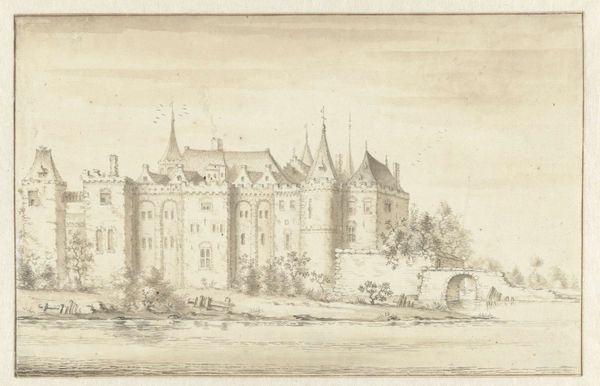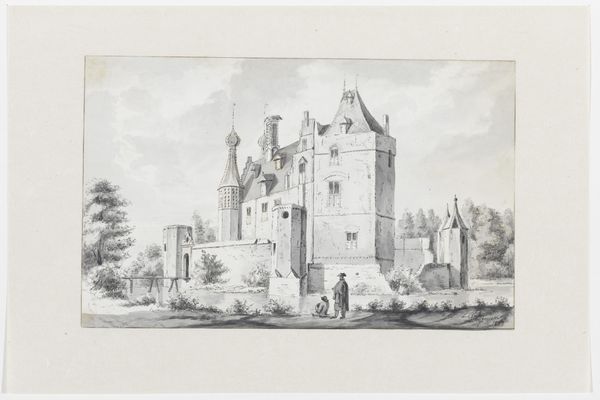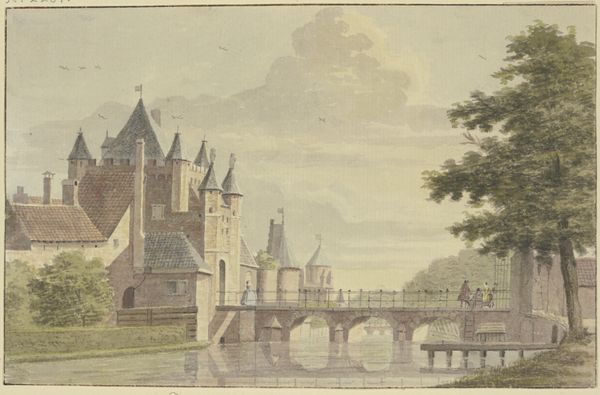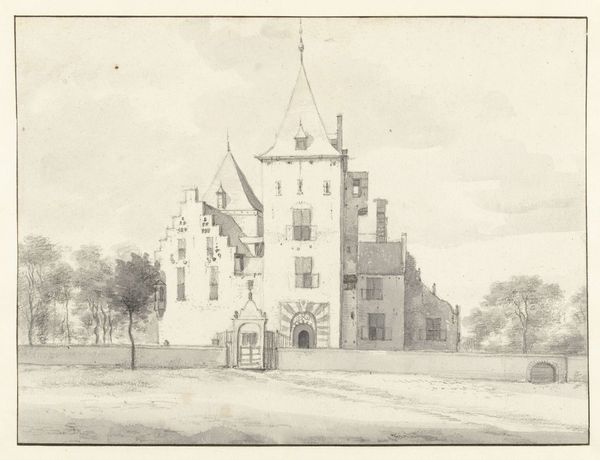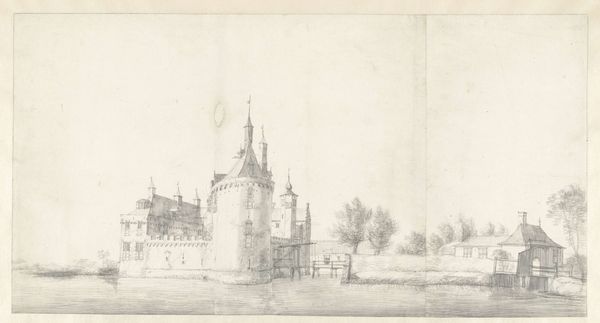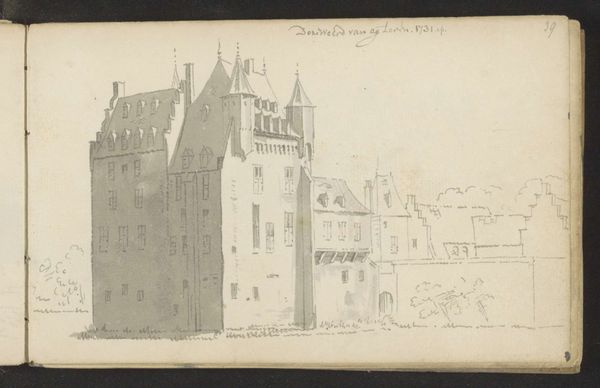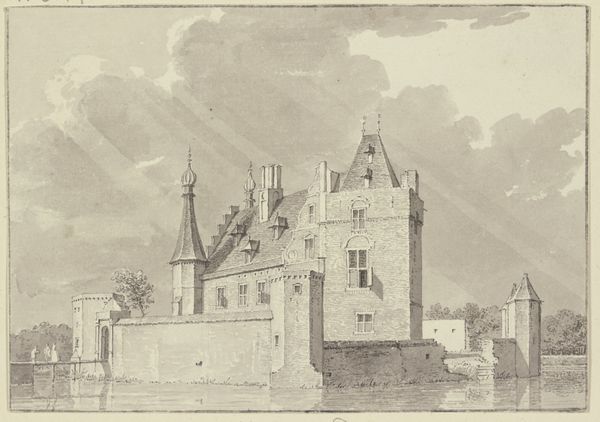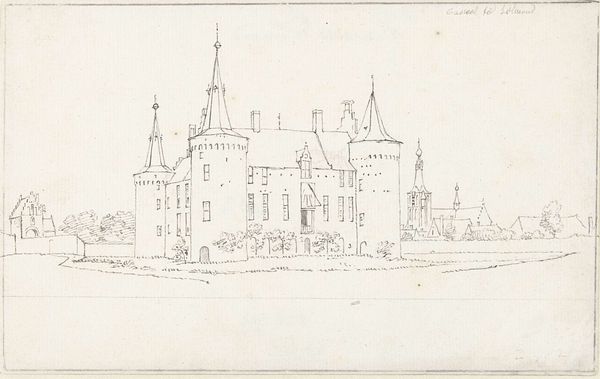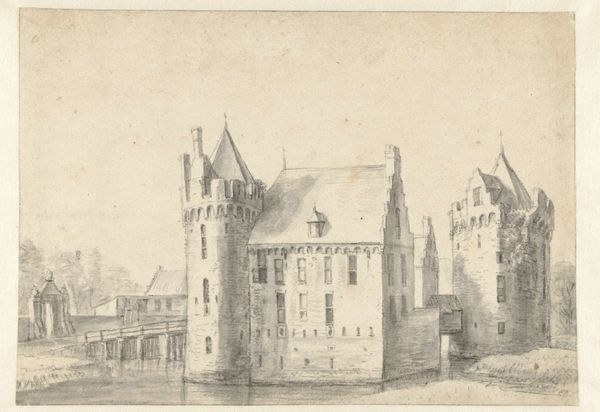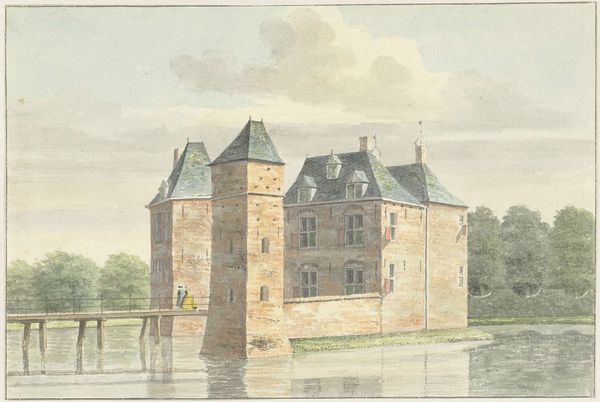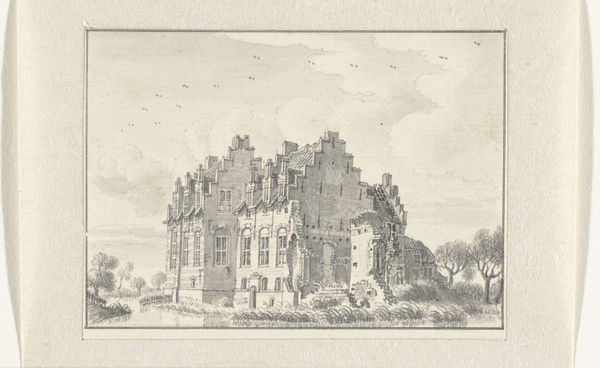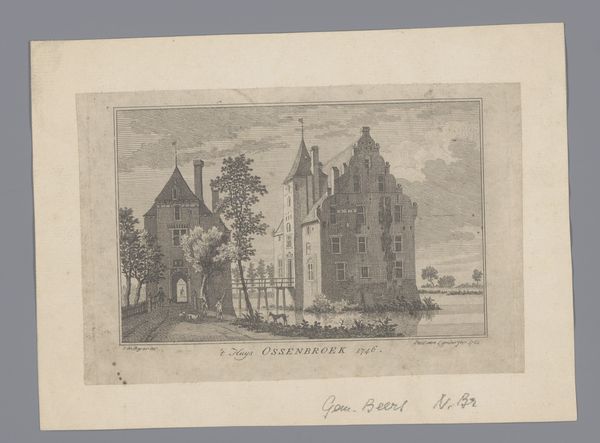
drawing, painting, paper, watercolor
#
drawing
#
baroque
#
dutch-golden-age
#
painting
#
pencil sketch
#
landscape
#
paper
#
watercolor
#
coloured pencil
#
cityscape
#
watercolour illustration
#
watercolor
Dimensions: height 150 mm, width 309 mm
Copyright: Rijks Museum: Open Domain
Curator: This delicate watercolor and pencil sketch, "Het Huis Driesberg," possibly dating back to 1744 or 1745, is by Jan de Beijer and currently resides here at the Rijksmuseum. What strikes you first about it? Editor: There’s an immediate sense of muted grandeur, almost melancholic. The overcast sky and the reflective water surrounding the castle really amplify that feeling. You can almost smell the dampness in the stone. Curator: Absolutely. It's vital to acknowledge the socio-economic backdrop. In the Dutch Golden Age, these stately homes were powerful symbols of status and wealth—often built on colonial exploitation and mercantile dominance. They are romanticized monuments but require a deeper understanding. Editor: I'm drawn to the physical rendering here. Notice how the texture of the paper and the way the artist employs watercolour gives the stone its heft and weathered character? He’s meticulous with his details on the house’s facade while also conjuring a mood that suggests nature's dominance. The building, no matter how majestic, bows to its surrounding materiality. Curator: That meticulousness mirrors the broader 18th-century societal emphasis on capturing and classifying the world through artistic and scientific observation. These landscape drawings weren’t just records of places, they were assertions of ownership, reflections of social order, and frequently, documents tied to exploitative land use practices. The labor required to keep the castle was erased to reflect the upper classes. Editor: The interplay between medium and subject is also crucial. Watercolor on paper offers a transient, almost ethereal quality which contrasts ironically against the very permanence that the castle tries to represent. How can we understand this material dissonance, and what do you suppose it meant for an audience? Curator: It challenges a singular interpretation. Perhaps the work critiques aristocracy from within its own structures? While upholding elite lifestyles through depictions of their prized possessions, it shows signs of their erosion. Its soft wash is suggestive of something about to fade from power—that requires further historical study. Editor: It gives a kind of material fragility to this architecture. Even in such skillful hands as De Beijer, he renders the hard permanence of the place itself into something yielding, almost tentative. Curator: Precisely. This piece really embodies the complexities of art history – it simultaneously showcases a monument of privilege while allowing us to critically examine the systems that uphold that privilege. Editor: Seeing art like this certainly provides perspective on how class, landscape, and our contemporary existence can coalesce even across centuries.
Comments
No comments
Be the first to comment and join the conversation on the ultimate creative platform.

